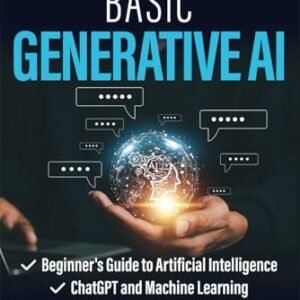Introduction:
In our rapidly evolving digital landscape, the Internet of Things (IoT) has emerged as a cornerstone of connectivity and innovation. From smart homes to industrial IoT systems, the proliferation of interconnected devices is transforming the way we live and work. However, as these devices become increasingly ubiquitous, they also present a growing target for cyber threats. The complexity and scale of IoT environments make them particularly vulnerable to attacks, raising critical questions about security measures.
Enter artificial intelligence (AI)—a powerful tool that is reshaping our approach to cybersecurity. By harnessing machine learning algorithms and advanced analytics, AI is poised to play a pivotal role in enhancing IoT security. Its ability to identify patterns, detect anomalies, and respond in real-time empowers organizations to protect their networks more effectively against a slew of cyber threats. In this article, we will explore the integral role of AI in fortifying IoT security, examining how it mitigates risks, enhances threat detection, and ultimately safeguards our connected world. Join us as we delve into the innovations that are redefining cybersecurity in the era of IoT.
Table of Contents
- Understanding the IoT Security Landscape and Its Vulnerabilities
- Leveraging AI for Real-Time Threat Detection and Response
- Implementing AI-Driven Automation for Enhanced Security Protocols
- Best Practices for Integrating AI Solutions in IoT Security Frameworks
- The Conclusion
Understanding the IoT Security Landscape and Its Vulnerabilities
The Internet of Things (IoT) has revolutionized the way we interact with the digital world, but its rapid expansion has opened doors to numerous security vulnerabilities. Devices, ranging from smart home appliances to industrial sensors, often lack robust security protocols, making them attractive targets for cyber attackers. Common vulnerabilities include:
- Insecure communication protocols: Many IoT devices transmit data without adequate encryption, exposing sensitive information.
- Weak authentication measures: Default passwords and simplistic login mechanisms can be easily bypassed.
- Insufficient software updates: A lack of regular updates leaves devices prone to exploitation from known threats.
The growing threat landscape necessitates advanced security measures to safeguard IoT ecosystems. Artificial Intelligence (AI) plays a pivotal role in enhancing security by providing real-time threat detection and response capabilities. By analyzing vast amounts of data from connected devices, AI systems can identify anomalous behavior indicative of potential breaches. Additionally, AI can facilitate:
- Predictive analytics: Forecasting possible security incidents before they occur.
- Automated incident response: Reducing response times to threats and limiting damage.
- Continuous monitoring: Ensuring that vulnerabilities are promptly addressed and mitigated.
Leveraging AI for Real-Time Threat Detection and Response
Artificial Intelligence has revolutionized how organizations approach cybersecurity, particularly in the IoT space. By implementing AI algorithms, businesses can continuously monitor network traffic, analyze patterns, and identify anomalies that may indicate a cyber threat. This real-time analysis enables security teams to respond promptly, often before a breach occurs. Key features of AI in this context include:
- Behavioral Analysis: AI learns the normal behavior of devices, allowing it to flag unusual activities.
- Automated Threat Intelligence: AI aggregates threat data from multiple sources, providing insights into emerging vulnerabilities and attack vectors.
- Proactive Defense Mechanisms: With predictive capabilities, AI can suggest remediation steps, significantly reducing response times.
Moreover, the integration of AI with existing security frameworks enhances the efficiency of incident response protocols. AI systems can autonomously execute predefined responses to detected threats, thereby alleviating the burden on human operators. Consider the following table that summarizes the benefits of AI-powered threat detection:
| Benefit | Description |
|---|---|
| Speed | Reduces the time to detect and respond to threats, minimizing potential damage. |
| Scalability | Can monitor numerous devices without considerable additional resources. |
| Accuracy | Improves detection rates and reduces false positives through machine learning. |
Implementing AI-Driven Automation for Enhanced Security Protocols
As organizations increasingly rely on the Internet of Things (IoT) to drive efficiency and innovation, the necessity of robust security measures becomes paramount. AI-driven automation significantly elevates security protocols by swiftly identifying and neutralizing potential threats before they manifest into larger issues. The integration of machine learning algorithms into security frameworks allows for continuous monitoring and analysis of network behavior, enabling the system to recognize anomalies that deviate from established patterns. This proactive approach not only reduces response times but also minimizes the chances of human error, which is often a critical vulnerability in traditional security measures.
Moreover, AI can streamline the management of security tasks through comprehensive automation. By implementing intelligent systems, organizations can benefit from:
- Real-time Threat Detection: Immediate identification of potentially harmful activities.
- Automated Responses: Predefined actions can be triggered upon detection of threats, reducing downtime.
- Adaptive Learning: Continuous improvement of security protocols based on evolving threats.
This blend of automation and AI empowers security teams to focus on strategic initiatives, as mundane tasks are efficiently handled by automated processes. By leveraging these advanced tools, businesses not only fortify their security posture but also foster a resilient environment in which IoT devices can operate securely.
Best Practices for Integrating AI Solutions in IoT Security Frameworks
Integrating AI solutions into the IoT security framework is essential for building a resilient defense against cyber threats. Utilizing machine learning algorithms for anomaly detection enables real-time identification of unusual patterns that could indicate a security breach. Moreover, establishing a robust data governance policy ensures that sensitive information collected from IoT devices is protected while also maintaining compliance with data protection regulations. Prioritizing a layered security approach, which combines AI-driven analytics, encryption, and access control measures, can significantly bolster the overall security infrastructure.
Furthermore, collaboration among stakeholders is crucial for a successful integration of AI in IoT security. Engaging with IoT device manufacturers, security experts, and end-users can provide valuable insights into potential vulnerabilities. Consider employing automated response systems that utilize AI to react to threats in real-time, minimizing the damage caused by cyber attacks. Regularly reviewing and updating security protocols and leveraging predictive analytics can also empower organizations to proactively address emerging threats. The synergy of AI technology with traditional security measures will create a dynamic framework capable of adapting to the ever-evolving landscape of cyber threats.
The Conclusion
As we navigate the rapidly evolving landscape of the Internet of Things, the importance of robust security measures cannot be overstated. With the exponential growth in connected devices, the potential risks associated with cyber threats loom larger than ever. However, the integration of artificial intelligence in IoT security presents a beacon of hope. AI’s ability to analyze vast amounts of data in real-time, detect anomalies, and adapt to emerging threats positions it as a crucial ally in the fight against cybercrime.
Incorporating AI-driven solutions can significantly enhance our response to potential vulnerabilities, allowing organizations to proactively safeguard their systems rather than reacting after a breach. As we continue to innovate and expand our IoT infrastructure, leveraging AI will not only help protect sensitive information but also instill confidence in users and stakeholders alike.
The journey toward enhanced IoT security is an ongoing one, and it will require collaboration across industries, governments, and technology providers. By embracing AI as a key component of our security strategy, we can build a safer, more resilient IoT ecosystem. As we move forward, let’s prioritize security in every connected device and ensure that the future of IoT remains bright and secure. Thank you for joining us in this critical discussion—together, we can make a meaningful impact in the realm of IoT security.





